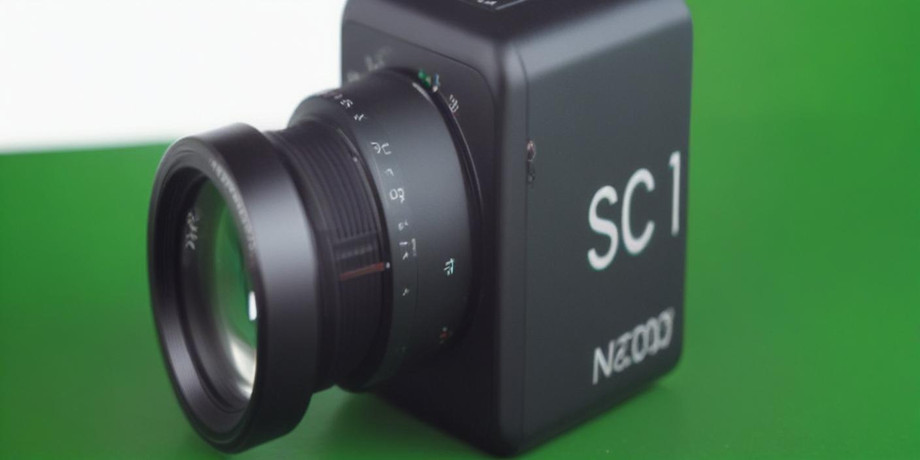Advanced Sensor Technology
The backbone of any automotive camera lies in its sensor. Cameras equipped with a 1/2.6” sensor and a 3.0 µm pixel size offer exceptional light sensitivity, ensuring crisp and detailed images even in low-light conditions. Backside Illumination (BSI) 2 technology further enhances this performance by reducing noise and boosting dynamic range, making it ideal for challenging automotive environments such as tunnels or night driving.
- Superior Light Capture: Larger pixel sizes allow more light per pixel, ensuring clarity.
- Enhanced Night Vision: BSI 2 minimizes reflection and captures true-to-life images.
- Dynamic Range Adaptability: Handles rapid lighting transitions like dawn, dusk, and headlight glare.
Versatile Resolutions for Varied Applications
From VGA to Full High Definition (FHD) and up to 2.5MP (1920 x 1280), automotive cameras cater to a range of resolution needs. Each resolution serves a specific purpose, from basic obstacle detection to high-precision lane detection.
- VGA Resolution: Suitable for backup cameras and simple detection tasks.
- FHD Clarity: Perfect for applications requiring detailed visual data, such as parking assist systems.
- 2.5MP Precision: Enables advanced functionalities like object recognition and traffic sign detection.
S Mount Lens Holder with IR Filter
The inclusion of an S Mount lens holder adds flexibility, allowing for custom lens configurations. Automotive systems benefit from the electromechanical IR filter, which automatically adjusts to changing light conditions.
- Custom Lens Compatibility: The S Mount accommodates a variety of lenses for different focal requirements.
- Dynamic IR Adjustment: Electromechanical filters enhance visibility in both bright and dark environments.
- Improved Infrared Performance: Ensures high contrast in scenarios such as fog or heavy rain.
Compact Dimensions for Seamless Integration
Modern automotive systems demand compact and adaptable components. Cameras measuring 38mm x 38mm, convertible to 32mm x 32mm, fit seamlessly into various vehicle designs without compromising functionality.
- Space-Saving Design: Minimal impact on overall vehicle aesthetics.
- Adaptable Installation: Convertible dimensions provide versatility for different mounting points.
- Streamlined Functionality: Compactness without sacrificing advanced capabilities.
Standard FAKRA Connector for Reliable Connectivity
A standard FAKRA connector ensures secure and stable connections within the vehicle's electronic architecture. These connectors are designed to endure vibrations and harsh automotive conditions.
- Robust Design: Withstands mechanical stresses from vehicle movement.
- Color-Coded Simplicity: FAKRA connectors use color coding for easy identification during installation.
- Stable Signal Transmission: Ensures uninterrupted data flow for critical camera functionalities.
Compliance with Industry Standards
Automotive cameras must adhere to stringent environmental and safety standards. Compliance with RoHS 3 and REACH regulations not only ensures environmental responsibility but also enhances consumer trust.
- RoHS 3 Compliance: Restricts hazardous substances, safeguarding the environment.
- REACH Compliance: Guarantees safety by regulating chemical usage in manufacturing.
- Consumer Confidence: Compliance certifications reassure vehicle manufacturers and end-users alike.
High Durability for Harsh Conditions
Automotive cameras must endure a wide range of environmental stresses, from extreme temperatures to constant vibrations. These cameras are built with rugged materials and advanced sealing techniques.
- Temperature Tolerance: Operates efficiently in both scorching heat and freezing cold.
- Vibration Resistance: Designed to function flawlessly even on uneven or bumpy terrain.
- Weatherproof Build: Protection against water, dust, and debris ensures longevity.
Enhanced Imaging Algorithms
Advanced automotive cameras come equipped with imaging algorithms that improve performance in real-time. These include features like High Dynamic Range (HDR), noise reduction, and automatic exposure control.
- HDR Functionality: Balances dark and bright areas in a single frame.
- Noise Reduction: Eliminates visual distortions caused by low-light conditions.
- Adaptive Exposure: Automatically adjusts to changing lighting scenarios for optimal visibility.
Scalability for Future Applications
As autonomous driving technologies advance, the scalability of automotive cameras becomes crucial. Cameras designed to integrate with AI systems and other advanced technologies ensure future-proofing.
- AI Integration: Compatible with machine learning systems for advanced decision-making.
- Sensor Fusion: Combines data from multiple sensors for enhanced situational awareness.
- Software Updates: Supports firmware upgrades for evolving functionalities.
Conclusion-Free Endings
By focusing on these features, automotive cameras prove to be indispensable components in modern vehicle systems, enhancing both safety and functionality through cutting-edge design and technology.
To learn about Camera for Automotive

